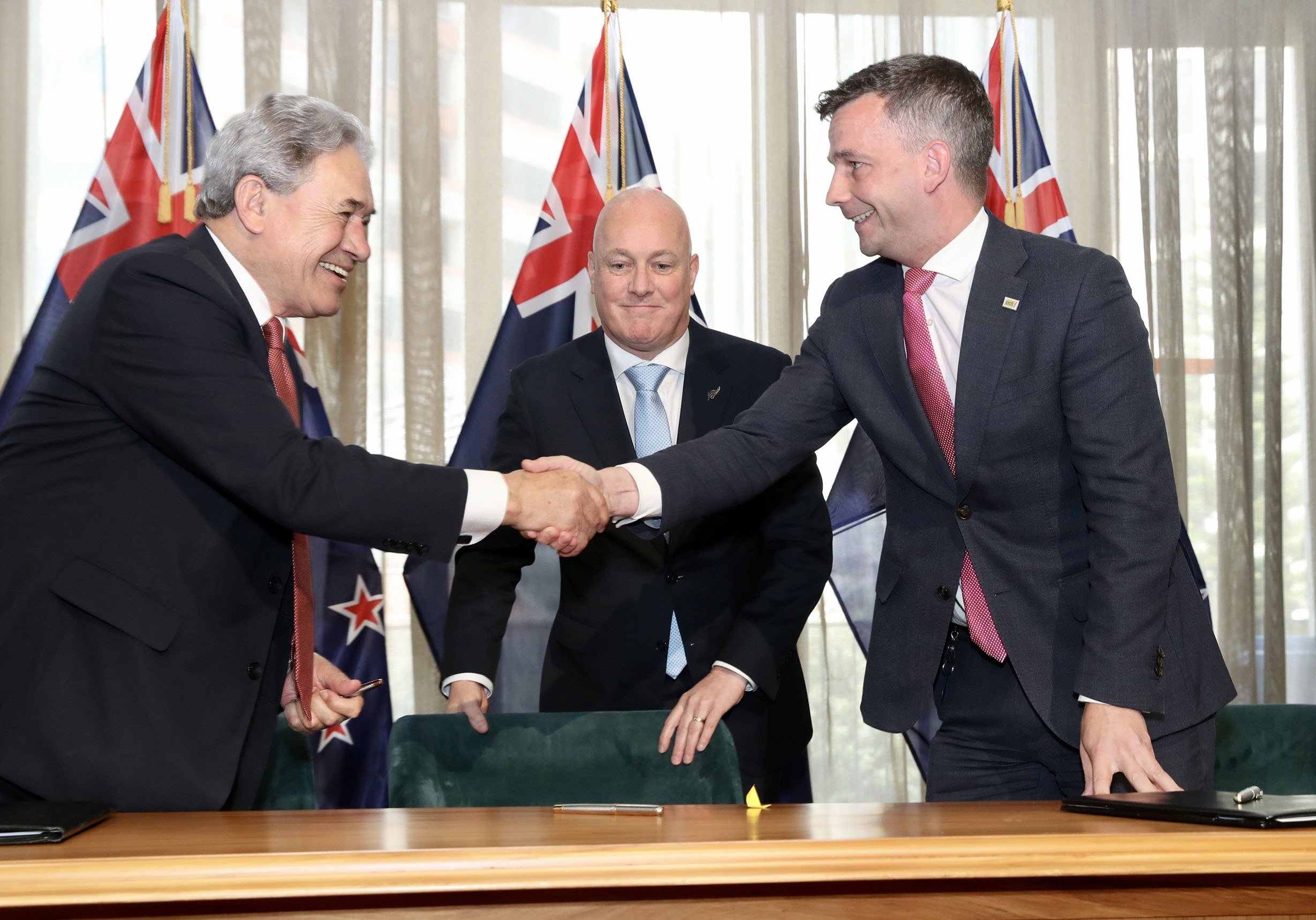
It has been fascinating to observe the commentary and coverage around the changeover of deputy prime minister from Winston Peters to David Seymour.
The novelty of a mid-term switch between party leaders occupying the role has created curiosity and what it means to be deputy prime minister, but even more interest in how the politics of the change play out.
The title of deputy prime minister was first formalised in 1949, but since then has been primarily symbolic in nature and mostly ceremonial in function.
For the most part, it has been held by the deputy leader of the party in government, but under MMP we have seen it occupied several times by a minor party leader — the first being Mr Peters back in 1996. But a changeover mid-term is new, for New Zealand anyway.
The job doesn’t just come with a new title, but a nice little pay rise of around $40,000 too — Cabinet ministers are currently paid $313,100, while the deputy prime minister gets $354,100 (this will rise to $362,600 from July 1, with Cabinet ministers getting a bump to $320,600).
As part of the job, the deputy prime minister is effectively expected to fulfil the role of the prime minister if they are absent or incapacitated — they answer questions in Parliament on the prime minister’s behalf, front media in their stead and chair Cabinet if required.
They also get to sit next to the prime minister in the House, so that’s a nice added bonus.
History has shown us the role is largely ceremonial. The deputy only rarely has to step into the PM’s shoes and is still bound by the collective responsibility of Cabinet, meaning they don’t have the ability to just make decisions without notice.
Probably the most famous period where a second-in-command stepped into the main job was when Mr Peters filled in for Jacinda Ardern when she went on parental leave.
This is generally looked back on as a smooth transition with no surprises, and showed how any sort of deputy arrangement can work successfully with minimal fuss.
The politics of the changeover are of great interest to many, specifically how both Mr Peters and Mr Seymour play the situation.
Neither man is an unknown quantity, so we expect both will continue to be themselves.
There seems to be an obsession with how individuals might change the way they act when taking on a particular role in government — we generally know the type of person they are when we vote for them (or not), so the expectation they will somehow alter that persona depending on the role they are given can seem odd.
When first asked about how he would approach the new title, Mr Seymour was clear he wouldn’t be changing his tone or approach.
At the end of the day, he’s still a politician with a particular voter base to please, but this isn’t any different from previous deputy prime ministers.
How it will affect next year’s election, if the coalition lasts full term, is also interesting.
With both Mr Peters and Mr Seymour unlikely to temper their approach, the closer we get to the election the more likely we are to start to see sparks fly.
The relationship between the pair is probably less of a problem for them, and more of a simmering issue for Prime Minister Christopher Luxon, especially as he tries to maintain the momentum of the coalition.
Mr Peters has already made it clear he doesn’t intend to use the mainstream media to connect with voters, but this is not surprising given his recent relationship with the media.
It would also not be surprising to see a similar approach from the Act New Zealand party in the lead-up to next year’s election.
The continued transition away from traditional media towards more self-driven social media is a trend likely to be more apparent across most political parties in coming campaigns. — Newsroom
• Michael Swanson is a PhD candidate with the politics programme at the University of Otago.










